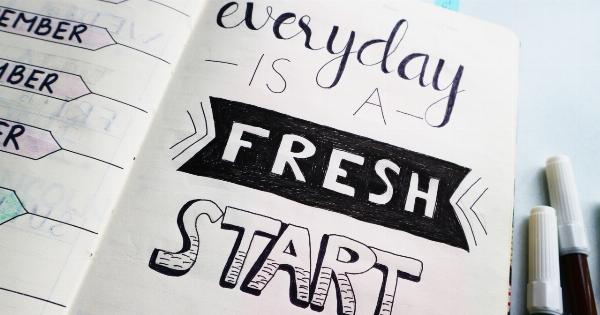Communication is a vital aspect of human interaction. While words play a significant role in conveying our thoughts and emotions, there is another powerful language that often speaks louder than words – nonverbal communication.
Our bodies can speak volumes through gestures, expressions, and movements, revealing our true feelings and intentions. In this article, we will delve into the fascinating world of nonverbal communication and explore how our bodies can communicate messages that words cannot convey.
The Power of Body Language
Have you ever noticed how a simple shrug or a raised eyebrow can completely change the meaning of a conversation? That’s the power of body language in action.
While spoken language is processed by the conscious mind, nonverbal cues are often processed by the subconscious mind, making them more genuine and reliable indicators of a person’s thoughts and feelings.
Research suggests that nonverbal communication accounts for a significant portion of our overall communication.
In fact, it is believed that more than half of all communication is conveyed through nonverbal cues, such as facial expressions, body movements, and tone of voice. These nonverbal signals can either reinforce or contradict the words we speak, conveying a deeper level of meaning.
The Three Channels of Nonverbal Communication
Nonverbal communication can be categorized into three main channels: body language, facial expressions, and vocal cues. Let’s explore each of these channels in more detail.
1. Body Language
Body language encompasses the movements, postures, and gestures we make while interacting with others. It includes everything from a firm handshake to a slight lean forward, from crossed arms to open palms.
For example, when someone leans in and maintains eye contact while listening to you speak, it signals their interest and engagement in the conversation.
On the other hand, crossed arms and a tense body posture often indicate defensiveness or disagreement.
Understanding and interpreting body language can help us gauge someone’s comfort level, emotions, and even their truthfulness.
However, it is essential to remember that body language can vary across cultures and individuals, meaning that context and individual differences should be considered when interpreting nonverbal cues.
2. Facial Expressions
Our faces are incredibly expressive, capable of conveying a wide range of emotions. From a smile that indicates happiness to a frown that signals displeasure, our facial expressions are universal indicators of our emotional state.
Studies have shown that our brains are wired to recognize and interpret facial expressions instinctively.
For example, a furrowed brow and narrowed eyes might indicate concentration or confusion, while a raised eyebrow can express surprise or disbelief.
Mastering the art of reading facial expressions can provide valuable insights into people’s emotions, allowing us to connect on a deeper level and respond accordingly.
3. Vocal Cues
When it comes to communication, it’s not just what we say but also how we say it that matters. Vocal cues, such as tone of voice, volume, and pitch, contribute significantly to the message being conveyed.
For instance, a soft and soothing voice can indicate comfort or sympathy, while a raised voice and increased volume might suggest anger or frustration.
Even the pace at which someone speaks can reveal their emotional state, with rapid speech reflecting excitement or nervousness and slow speech expressing a more relaxed or deliberate mindset.
By paying attention to these vocal cues, we can better understand the underlying emotions behind someone’s words and adjust our responses accordingly.
The Importance of Nonverbal Communication
While verbal communication allows for the exchange of information, nonverbal communication goes beyond words – it helps us connect on an emotional level and fosters empathy, understanding, and trust in our relationships.
Nonverbal cues can also assist us in navigating social situations. By paying attention to others’ body language, we can gauge whether they are open to conversation, in need of support, or uncomfortable in a particular setting.
In professional settings, nonverbal communication can significantly impact our success. A confident posture, a firm handshake, and maintaining eye contact convey professionalism and competence.
On the other hand, slouching, fidgeting, and avoiding eye contact might suggest a lack of confidence or disinterest.
Additionally, understanding nonverbal communication can help us more accurately interpret the intentions and emotions of others.
By focusing not only on what someone says but also on how they say it and what their body language reveals, we can avoid misunderstandings and respond appropriately to the underlying message.
Improving Our Nonverbal Communication Skills
Like any form of communication, nonverbal communication can be enhanced with practice and awareness. Here are a few tips for improving our nonverbal communication skills:.
1. Pay Attention
Start by paying closer attention to your own body language and the nonverbal cues of others. Observe how different postures, facial expressions, and vocal tones convey various meanings.
This heightened awareness will allow you to pick up on subtle cues that might otherwise go unnoticed.
2. Practice Active Listening
Active listening involves not only hearing the words a person is saying but also understanding the emotions and underlying messages they are conveying nonverbally.
Take the time to listen attentively and respond thoughtfully, both verbally and nonverbally.
3. Adapt to Different Cultural Norms
Nonverbal communication can vary widely across different cultures. Gestures, facial expressions, and even personal space can have different meanings depending on one’s cultural background.
Be open-minded and willing to adapt your nonverbal communication style to respect and understand cultural differences.
4. Seek Feedback
If you are unsure about your own nonverbal signals, ask for feedback from trusted friends, family, or colleagues. They may provide insights into areas where you can improve or offer suggestions for conveying your intended message more effectively.
Conclusion
Nonverbal communication is a powerful tool that adds depth and richness to our interactions. Our bodies speak louder than words, expressing our emotions, thoughts, and intentions in ways that cannot be conveyed through verbal language alone.
By honing our nonverbal communication skills, both in understanding and expressing ourselves, we can foster stronger connections, improve our relationships, and navigate social situations with greater ease.






























